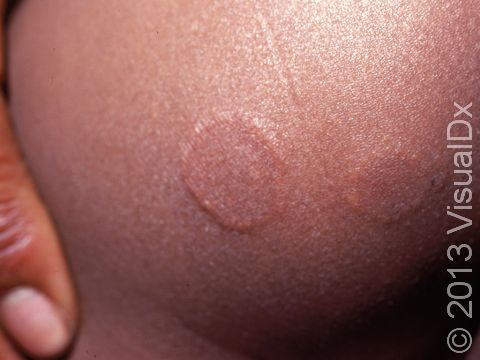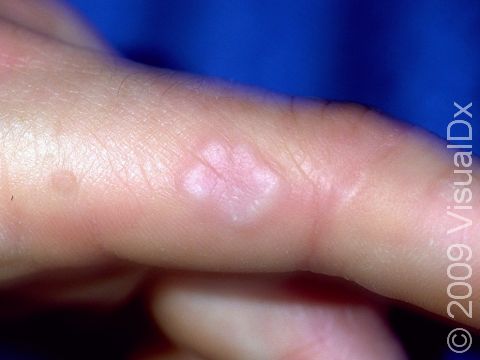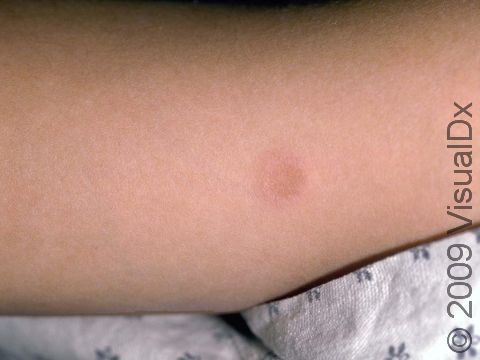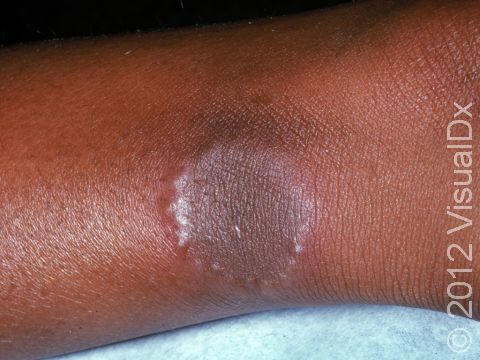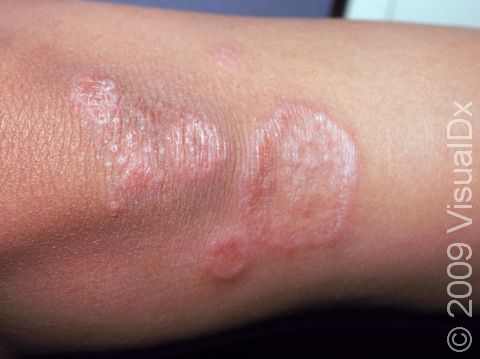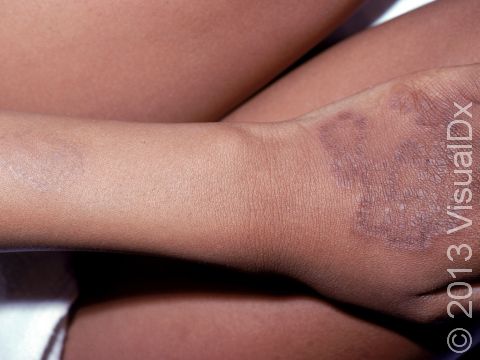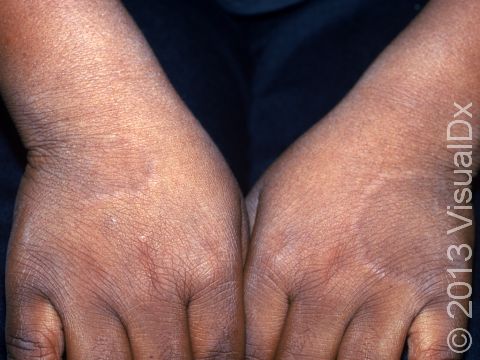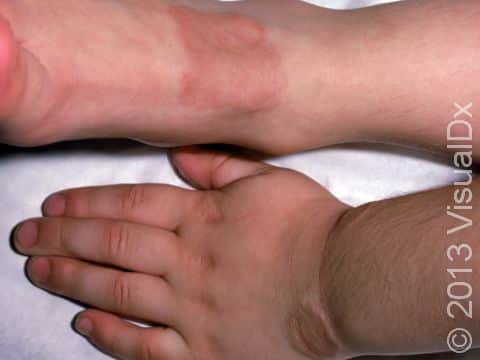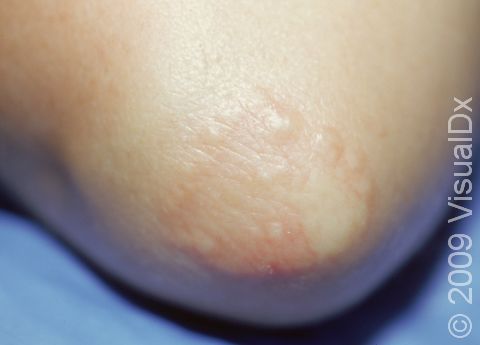Granuloma Annulare
Granuloma annulare is a common skin condition that appears as papules (small, solid bumps) that may form smooth, ring-shaped plaques (flat areas that are larger than a thumbnail) over the joints and the backs of the hands. The cause is not known, and most outbreaks of granuloma annulare go away after a few years with or without treatment.
Who's At Risk?
Although granuloma annulare can occur in people of any race / ethnicity and at any age, it is most commonly seen in children and young adults. Females are slightly more likely than males to develop granuloma annulare.
Signs & Symptoms
Granuloma annulare occurs most frequently over the joints or in areas that have had a mild injury. The most common locations for granuloma annulare include:
- The backs of the hands and tops of the fingers.
- The tops of the feet.
- Around the elbows.
- Around the knees.
However, other areas of the skin may also be affected. The lesions of granuloma annulare are usually found in the same areas on both sides of the body (symmetrically).
Granuloma annulare appears as papules that may occur singly or in groups, and they may form ring-shaped plaques. The center of the plaque may be lighter or darker than your normal skin color. Healed lesions of granuloma annulare do not leave scars.
Granuloma annulare is usually asymptomatic, but your child may experience itch.
Granuloma annulare may be skin-colored in skin of any color; it may appear pink, light brown, red-brown, or light purple in lighter skin colors; or it may be pink, brown, or purple in darker skin colors.
Self-Care Guidelines
If the lesions of granuloma annulare are itchy, an over-the-counter cortisone (eg, Cortaid) cream may be helpful.
Treatments
If the diagnosis is not obvious, a dermatologist may perform a skin biopsy.
Once the diagnosis of granuloma annulare is confirmed, you and your medical professional may decide to not treat it as many cases of granuloma annulare can clear up within 2 years, even without treatment.
If the lesions of granuloma annulare cause discomfort or are widespread or cosmetically bothersome, your child’s medical professional may try:
- A prescription-strength steroid cream.
- Steroid injections directly into the lesions or freezing with liquid nitrogen (cryotherapy). These treatments may be somewhat painful. Additionally, in darker skin colors, these treatments may leave an area of lighter skin color.
Visit Urgency
If your child has bumps or a ring-shaped lesion on the skin for more than a few weeks, see their medical professional or a dermatologist.
References
Bolognia J, Schaffer JV, Cerroni L. Dermatology. 4th ed. Philadelphia, PA: Elsevier; 2018.
James WD, Elston D, Treat JR, Rosenbach MA. Andrew’s Diseases of the Skin. 13th ed. Philadelphia, PA: Elsevier; 2019.
Kang S, Amagai M, Bruckner AL, et al. Fitzpatrick’s Dermatology. 9th ed. New York, NY: McGraw-Hill Education; 2019.
Paller A, Mancini A. Paller and Mancini: Hurwitz Clinical Pediatric Dermatology. 6th ed. St. Louis, MO: Elsevier; 2022.
Last modified on June 13th, 2024 at 4:04 pm

Not sure what to look for?
Try our new Rash and Skin Condition Finder
